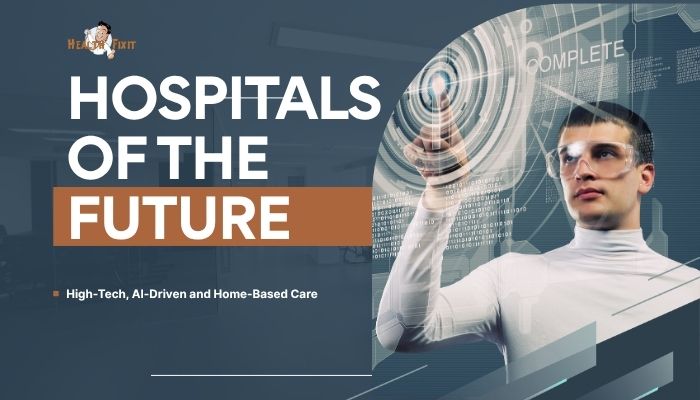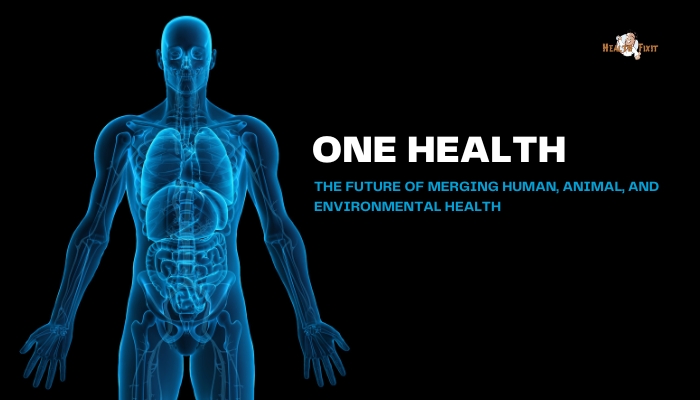Introduction
Hospitals have always been cornerstones of modern healthcare. But as medical technology rapidly advances and patient preferences evolve
, the hospital of the future is poised to look radically different. From AI-assisted diagnoses and wearable sensors tracking vitals in real time
, to minimal in-hospital stays and extensive care at home, the next era of healthcare is shifting focus to better outcomes, convenience,
and patient empowerment. This article examines how digital transformation, new delivery models, and remote care solutions converge to reshape hospitals into hubs of innovation—both inside their walls and in patients’ living rooms.
Reimagining the Hospital Experience
Human-Centered Design
The hospital of tomorrow is less an institution of metal beds and long waits, more a welcoming, patient-friendly environment. Architectural changes will favor:
- Modular, Flexible Spaces: Allow easy reconfiguration for evolving needs (e.g., new pandemics, specialized wards).
- Biophilic Elements: Incorporate natural light, indoor greenery, and calming aesthetics to enhance healing.
- Decentralized Facilities: Smaller specialized clinics or micro-hospitals integrated within communities for routine care, with large central hospitals for critical cases.
Intelligent, Connected Infrastructure
Technological integration is key:
- Smart Room Systems: Lighting, climate, and digital interfaces that adapt to the patient’s condition.
- Wearable Integration: Continuous streams of vital-sign data from devices or implants feed central dashboards, alerting nurses to changes in real time.
- Robotics: Automated cleaning, supply transport, or even surgical robots reduce infection risk and free staff for more skilled tasks.
AI and Data-Driven Medicine
Clinical Decision Support
Artificial intelligence (AI) can rapidly process patient histories, lab results, and imaging to suggest likely diagnoses or best treatments. This aids overburdened clinicians, ensuring no crucial detail is overlooked. Examples:
- Radiology: AI systems highlight suspicious lesions in CT or MRI scans, speeding up diagnostic interpretation.
- Precision Prescribing: By integrating genomics and EHR data, AI can propose personalized medication choices or dosages.
Predictive Analytics
Using machine learning on hospital data can forecast:
- Patient Deterioration: Early signs of sepsis or heart failure exacerbations, triggering timely interventions.
- Demand and Staffing: Predict surges in ED admissions (e.g., seasonal flu), letting management proactively assign resources.
Operational Efficiency
AI optimizes patient flow:
- Bed Allocation: Real-time bed tracking ensures minimal wait times for admissions.
- Scheduling: Algorithmic scheduling for surgeries, radiology, or checkups, balancing staff availability and patient convenience.
Home-Centered and Virtual Care
Remote Patient Monitoring
Instead of extended hospital stays, patients can be discharged earlier with sensor-based home monitoring. Devices track vitals (blood pressure, oxygen levels, heart rate) and transmit data to the hospital. If anomalies appear, clinicians can respond before complications escalate.
Telemedicine and Virtual Wards
Video consultations, secure messaging, and digital triage tools reduce the need for in-person clinic visits:
- Chronic Disease Management: Diabetics or hypertensives share daily logs with care teams, adjusting meds remotely.
- Hospital-at-Home Programs: Patients with moderate infections or post-operative needs receive intravenous therapy or skilled nursing visits in their own living space, supervised virtually by hospital staff.
Personalized Rehabilitation
Wearable exoskeletons or VR-based rehab systems guide physical therapy at home, collecting performance metrics for therapists to review and customize exercises. This approach frees up hospital space and improves patient comfort.
Enhancing Patient Engagement
Self-Service Models
Digital portals let patients schedule appointments, view records, or track prescriptions without phone calls. Kiosks in hospital lobbies handle check-in, triaging tasks, or directions to specialized clinics.
Empowering Health Literacy
Interactive apps and AI chatbots provide explanation of diagnoses, medications, or follow-up steps in easy language. Gamified patient education helps them better adhere to care plans, diminishing readmissions.
Continuous Feedback
Post-visit feedback forms and real-time patient satisfaction analytics highlight service gaps quickly—leading to faster improvements in care quality.
Privacy and Security Considerations
Safeguarding Health Data
As EHR systems, cloud-based analytics, and remote monitoring multiply, robust cybersecurity measures—encryption, multi-factor authentication—are crucial to protect patient privacy from data breaches.
Ethical Use of AI
Algorithms must be transparent, validated, and free of biases. Patients deserve clarity on how AI influences their care decisions, ensuring trust and accountability.
Regulatory Alignments
Standards like HIPAA (in the U.S.) or GDPR (in the EU) shape how patient data is stored, shared, and used by advanced digital solutions. Ongoing updates are needed as technologies evolve.
Preparing Healthcare Teams
Upskilling and Training
Clinicians need to learn new software, interpret AI outputs, and coordinate remote monitoring. Interdisciplinary teams (engineers, data scientists, clinicians) become the norm for designing or managing advanced healthcare services.
Redefining Roles
As some tasks become automated—like analyzing routine scans—healthcare professionals can focus on nuanced patient interactions, complex decision-making, or leading integrated care efforts. Managers pivot to orchestrating telemedicine networks and data-driven protocols.
Embracing Change Management
Shifting from a purely bricks-and-mortar hospital to a high-tech, partly virtual system requires cultural adaptation, staff buy-in, and robust user-friendly technology that doesn’t overwhelm day-to-day workflows.
Conclusion
Hospitals of the future combine high-tech solutions, AI-driven insights, and expanded home-based care offerings to deliver personalized and efficient treatment.
This transformation rests on data integration, secure telemedicine networks, and an empowered healthcare workforce adept at interpreting real-time patient information.
By embracing these changes—intelligent infrastructure, smart robotics, home monitoring, and targeted AI—healthcare can become more accessible,
patient-centric, and preventative. The era of traveling to a hospital for every procedure or checkup will recede,
replaced by a flexible system in which the hospital is as much a command center for remote care as it is a physical location for acute interventions. In the end, the success of these innovations depends on thoughtful implementation,
unwavering focus on patient well-being, and bridging the digital divide so that tomorrow’s hospitals truly serve all who need them.
References
- World Health Organization. Global strategy on digital health. 2020.
- Goldhahn J, Rampton V, Spinas GA. Predictive analytics in healthcare: hype or hope? Trends Mol Med. 2018;24(2):112–120.
- Frenk J, Moon S. Governance challenges in global health. N Engl J Med. 2013;368(10):936–942.
- The Lancet Digital Health. The hospital of the future. Lancet Digit Health. 2019;1(3):e89.
- Darzi A, Evans T. The future of hospitals. Lancet. 2016;388(10054):2925–2926.
- Khanna S, Amadi C. Telehealth and remote patient monitoring in times of pandemics. J Telemed Telecare. 2021;27(1):3–4.
- Bonacina S, Ottaviani G, Pinciroli F. Hospitals reimagined: How technology is redefining care. Int J Environ Res Public Health. 2020;17(21):8051.
- Khan WZ, Rehman MH, Zangoti HM, et al. Industrial internet of things: recent advances, enabling technologies and open challenges. Comput Commun. 2020;146:114–137.
- Ting DSW, Carin L, Dzau V, Wong TY. Digital technology and COVID-19. Nat Med. 2020;26(4):459–461.
- Glaser J, Ashraf R. Adopting AI in clinical settings: bridging the last mile. NEJM Catalyst. 2021.







